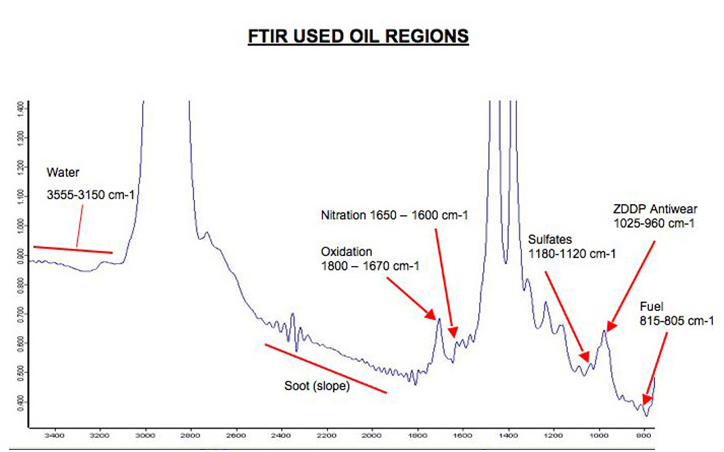Oxidation


Oxidation in lubricating oil occours when water, air and catalytic particulates like iron and copper react and oxidize the hydrocarbons in the oil and convert them to compounds that have low lubrication. The corrosive tendencies of the oil increases and the oil starts formation of varnish which is detrimental to the oil and the system.
Oxidation is perhaps one of the biggest problem in the lubricant. It is responsible for the degradation of the lubricant which causes numerous problems like :
- Increase in viscosity
- Varnish, sludge and sedimentation formation
- Base oil breakdown
- Additive depletion
- Loss of lubricity
- Rust formation and corrosion
- Fliter plugging
- Loss in foam control
- Increase in Total Acid Number (TAN)
High Oxidation occurs as the molecules in the oil are exposed to oxygen over long intervals and is accelerated by high operating temperatures resulting in loss of lubrication and in severe cases of oxidation the oil becomes dark and starts emitting odor. It is important to know that one of the most significant reasons is high operating temperature, because the rate of oxidation doubles for every 10°C (18°F) rise in temperature above 75°C (165°F). Excessively high operating temperature (overheating) is generally accompanied by increased wear (lead, copper, tin and iron) and increased baseline viscosity.
The co-relation between high Oxidation and high Acid Number can be easily understood as such, Oxidation causes break down of the molecules in the oil and the reaction by-products are carboxylic acids which are acidic in nature (just like common acids like hydrochloric acids or sulphuric acids), but are not so strong in nature. A more common household product like Vinegar – contains carboxylic acid, an acetic acid. Thus most probably the lubricant which has undergone high acidity has also undergone high oxidation.
Testing of Oxidation
The testing of oxidation is done in our laboratory by using (FTIR) Fourier transform infrared spectrometer, which can be coupled with Acid Number Test and Viscosity to determine the extent of oxidation and degradation of the oil.
Method of Testing
As per ASTM E2412 & ASTM D7414 : Test Method for Condition Monitoring of Oxidation in In-Service Petroleum and Hydrocarbon Based Lubricants by Trend Analysis Using Fourier Transform Infrared (FT-IR) Spectrometry.
Testing Equipment used by us in our laboratory: PerkinElmer make FT-IR Spectrometer model Spectrum 65.
A typical FTIR graph in which oxidation is shown and determined.

